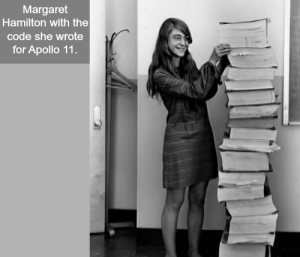Software programming languages for education range from drag and drop graphical software like Scratch to Small Basic and Python. This page lists programming software geared towards students as young as kindergarten (Turtle Art) on up. Many are visual programming environments where kids can combine blocks to create software. Others, like Codea, allow you to actually code, in that case with Lua. Still other languages, like Code Spell, Run Marco!, The Foos, and World of Codecraft, teach programming skills while kids are engaged in an online game.
The main difference between “block” languages and “real” languages? Block languages let kids create things without having to learn syntax and other details. They can graduate to languages with syntax more easily when they understand basic programming concepts.
Also note these languages work for parents who want to learn and play with their kids, as well as kids who want to learn at their own speed.
Alice
Alice teaches programming concepts as kids create animated movies with its friendly interface and storytelling.
http://www.alice.org
All Can Code (Run Marco!)
Teaches programming in a fun adventure game. An original story with beautiful artwork, designed for 6 to 12 y.o. kids by a team of experts in computer programming, game design, and teaching technology in schools. Translated into 13 languages. Works on tablet, phone, web.
http://www.allcancode.com/
http://marco.allcancode.com/
https://itunes.apple.com/us/app/run-marco!/id919554969
https://play.google.com/store/apps/details?id=com.allcancode.runmarco
App Inventor
This software programming language for education to build Android applications with a drag and drop visual environment.
http://www.appinventor.org/
Beta the Robot
Blockly
http://code.google.com/p/blockly/
CargoBot
Made with the Codea iPad application, a game to teach programming concepts.
http://twolivesleft.com/CargoBot/
https://itunes.apple.com/us/app/cargo-bot/id519690804?ls=1&mt=8
Codea (iPad)
http://twolivesleft.com/Codea/
https://itunes.apple.com/us/app/codea/id439571171?mt=8
Code Combat
Codeletics NEW
http://www.codeletics.com/
http://www.codeletics.com/resources/teachersguide.pdf
Code with Bolt
Bolt is a complete language that runs entirely (and safely) in the browser. It’s a language explicitly designed for kids, and comes with worked examples that map to the UK curriculum for KS 2/3 and beyond.
http://www.codewithbolt.com/
Daisy the Dinosaur
An iPad app from the people who bring you Hopscotch.
https://itunes.apple.com/us/app/daisy-the-dinosaur/id490514278
Erase All Kittens (E.A.K.)
An amusing story makes it easy for kids to learn about HTML and the coding process.
http://www.eraseallkittens.com
Gamemaker Studio
Requires a little more effort but this is a more professional game development system.
https://www.yoyogames.com/studio
GameStar Mechanic
Teaches computer science concepts around coding.
http://gamestarmechanic.com/
Hakitsu Elite
This iPad application teaches JavaScript through a robot game.
http://kuatostudios.com/games/hakitzu/
https://itunes.apple.com/app/id599976903?mt=8
Hopscotch (iPad)
http://www.gethopscotch.com/
https://itunes.apple.com/us/app/hopscotch-hd/id617098629?mt=8
Kodable
An educational iPad game providing a kid friendly introduction to programming concepts and problem solving to kids 5 and up.
http://www.surfscore.com/
Kodu
From Microsoft, this visual programming language works on the PC and XBox.
http://research.microsoft.com/en-us/projects/kodu/
LearnToMod NEW
Light Bot
Light-bot is an engaging puzzle game that lets players gain a practical understanding of basic control-flow concepts like procedures, loops, and conditionals, just by guiding a robot with commands to light up tiles and solve levels.
http://light-bot.com/
LOGO
From 1960s, a language geared towards children and serious adult computing. Ideas are incorporated into Scratch, Move the Turtle, and other languages.
http://el.media.mit.edu/logo-foundation/products/software.html
MinecraftEdu
A small team of educators and programmers in the US and Finland make it easy for kids to build and learn with Minecraft.
http://minecraftedu.com/
Move the Turtle
This iPad application teaches programming concepts and coding in a highly visual way.
http://movetheturtle.com/
https://itunes.apple.com/us/app/move-turtle.-programming-for/id509013878?ls=1&mt=8
Pocket Code
Create your own games, apps, and music videos with this Android app.
https://pocketcode.org/
https://play.google.com/store/apps/details?id=org.catrobat.catroid
Project Spark!
On Microsoft Windows and XBox, kids can play and create using tools provided by Project Spark. Active community and lots of guides and tutorials.
http://www.projectspark.com
https://www.youtube.com/watch?v=fIJKBHhdifE#t=18
RAPTOR
RAPTOR is a flowchart-based programming environment, designed specifically to help students visualize their algorithms.
http://raptor.martincarlisle.com/
Robo Logic
This iPad application uses blocks coded with logic to let kids control a robot.
http://www.digitalsirup.com/apps/app_robologic.html
https://itunes.apple.com/app/robo-logic/id300025550?mt=8
RoboMind
Kids learn logic, computer science, and robotics by building a robot.
http://www.robomind.net
Ruby for Kids
http://www.ruby4kids.com/ruby4kids
Scratch
http://scratch.mit.edu/
http://en.wikipedia.org/wiki/Scratch_%28programming_language%29
Small Basic
From Microsoft, a cut down version of Basic to teach programming to kids and adults. Includes lots of tutorials. For Windows computers.
http://smallbasic.com/
http://visualstudiomagazine.com/articles/2011/12/01/get-em-while-theyre-young.aspx
Snap
A port of Scratch, from the University of California at Berkeley.
http://snap.berkeley.edu/snapsource/snap.html
Spherly
Programming language for Sphero robots, which are also fun.
http://outreach.cs.ua.edu/spherly/
Stencyl
Uses a visual programming language to create cross-platform applications for almost any platform. Stencyl software works on Mac, Windows, and Ubuntu/Linux.
http://stencyl.com/
The Foos
Kids can play and have fun while learning the basics of coding plus problem solving, critical thinking, and other skills.
http://thefoos.com/
http://thefoos.com/play/
https://itunes.apple.com/us/app/foos-code-for-hour-edition/id923441570?mt=8&uo=4
https://play.google.com/store/apps/details?id=org.codespark.thefoos
http://www.amazon.com/gp/product/B00P8G5DDU/ref=mas_pm_the_foos_code_hour
Try Ruby
Toon Talk
TouchDevelop
Microsoft’s really easy to learn and use software for teaching kids how to program and create software. Great for hackathons and coding in large groups.
https://www.touchdevelop.com/
Turtle Art
Geared towards the wee ones, little kids, who can create really neat artwork and other fun stuff.
http://turtleart.org/
Turtle Academy
Tynker
This software programming language for education is a hosted drag and drop programming tailored towards classroom teaching of programming and computer science. Also have an iPad version of their curriculum.
http://www.tynker.com/
https://itunes.apple.com/us/app/tynker-learn-programming-visual/id805869467
WaterBear
Waterbear is a toolkit for making programming more accessible and fun.
http://waterbearlang.com/
World of Codecraft
Coming soon, Wired did a piece on this project from North Carolina State University in Raleigh.
http://www.wired.com/wiredenterprise/2013/07/programming-game-engagement/
Top image nicked from Hopscotch website.
Source: https://www.kidscodecs.com/resources/programming/education/



